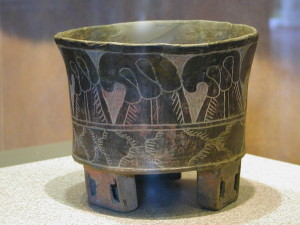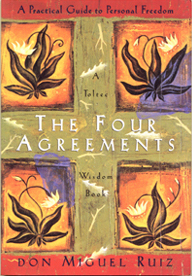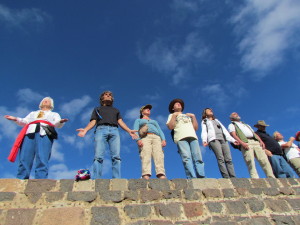
Who Are the Toltecs? A Brief History
No one knows why the Toltec culture disappeared
Not much is known about the ancient Toltecs of central Mexico. They had no written language, and were gone from their cities many years before the Aztecs arrived to build the center their culture at what is now Mexico City. The Aztecs found the pyramid complex of the Toltecs at Teotihuacan in ruins when they began to explore the area. Much of what the Aztecs recorded about their discoveries and assumptions about the Toltecs was destroyed by the Spanish. No one knows why the Toltec culture disappeared sometime in the 12th century.
What’s in a Name?
The Aztecs used the word ‘Toltec’ to describe the lost culture and pyramids they discovered in the lands north of them. In the Nahuatl language of the area Toltec means “artist.” The ancient people of Mexico and much of Latin America were master artists in stone, gold, silver, and precious stones, and used their art to celebrate life and their gods. Although the Toltecs did not leave many clues about their origins, language, religion, or other facts of their daily lives, their art survives as a small window into a time and way of life, which will probably remain a mystery forever. Perhaps it is appropriate to call all of the unknown ancients of central Mexico “Toltecs” — artists of stone and building, and artists of the Spirit. Little is known about the cultures of those early times, however it is important to understand there were societies of people in central Mexico who possessed deep spiritual understanding and considerable knowledge of astronomy, along with sophisticated systems of government, agriculture, and building. 
Although these ancient cultures and societies came and went, the deep spiritual understandings that had been passed down through the generations survived. Their powerful truths were given from teacher to student, from Master to apprentice, and kept hidden from the masses. For many centuries, the teachings of the Toltecs were kept alive as an underground mystery school, spreading throughout Mexico and beyond.
Carlos Castaneda Opens the Door
The first introduction to the Toltec mysteries for many readers was the book by anthropologist and author Carlos Castaneda, The Teachings of don Juan—a Yaqui Way of Knowledge, published in 1968. Ten more books followed, based on Castaneda’s experiences with the Nagual don Juan Matus in the desert of northern Mexico. Since then, many authors have written about the Toltec tradition, some from direct experience, and others from past lives, apprenticeships, or other connections. As the Toltec wisdom leaves the realm of the secret mystery schools and enters into the light of modern culture, it is both enhanced by other traditions and diluted by individual teacher’s personal opinions. Some teachers have been seduced away from the power of the teachings by the excitement of using psychotropic plants, while others may be attracted to accumulating power and forgetting their original desire for freedom.
Miguel Ruiz Shows the Practical Path
 A frequent criticism of the early writings about the Toltec wisdom, especially Castaneda’s, was that although the books were fascinating to read, they were not very practical for solving modern issues. Later authors, particularly Miguel Ruiz, who’s first book in 1997, The Four Agreements—A Practical Guide to Personal Freedom, captured the minds and hearts of millions of readers all over the world, distilled the teachings into useful tools for personal transformation. An important change in the Toltec tradition is the shift from fear-based to love-based teachings. The early writers, again especially Castaneda, described the need for personal power to use in defense against attack from all manner of forces, seen and unseen. Castaneda often describes himself shaking in terror, waiting for some force or entity to attack him. It is intriguing that don Juan’s final words on earth to Carlos were “I hope you find love!” (The Active Side of Infinity). Newer writers stress the importance of acceptance and love as the healing power for troubled individuals and the world.
A frequent criticism of the early writings about the Toltec wisdom, especially Castaneda’s, was that although the books were fascinating to read, they were not very practical for solving modern issues. Later authors, particularly Miguel Ruiz, who’s first book in 1997, The Four Agreements—A Practical Guide to Personal Freedom, captured the minds and hearts of millions of readers all over the world, distilled the teachings into useful tools for personal transformation. An important change in the Toltec tradition is the shift from fear-based to love-based teachings. The early writers, again especially Castaneda, described the need for personal power to use in defense against attack from all manner of forces, seen and unseen. Castaneda often describes himself shaking in terror, waiting for some force or entity to attack him. It is intriguing that don Juan’s final words on earth to Carlos were “I hope you find love!” (The Active Side of Infinity). Newer writers stress the importance of acceptance and love as the healing power for troubled individuals and the world.
The Toltecs of Today: Artists of the Spirit
Perhaps the greatest artistry of the ancient Toltecs was their spiritual realization. There is much evidence in Tula, Teotihuacán, and other cities of ancient Mexico, that the people who lived there experienced and shared deep spiritual truths. The questions they explored about their place in the universe, and life beyond death, were the same ones asked by humans throughout history. Those questions are still being asked, and answered, on the Toltec path today.
The Toltec of today is a Spiritual Warrior, struggling against the lies and beliefs that deny his place in the perfection of creation. He uses the tools of stalking, dreaming, recapitulation, and many others from the ancients, to break the bonds of his cultural programming, and be free.  The Toltec Path offers the potential to change your entire life. To become a Toltec Spiritual Warrior and free yourself from the conditioning of your childhood and culture is the greatest gift you could give yourself. It is a chance to let go of suffering forever, and be always happy. Your happiness becomes a gift to all of creation. The Toltec Warrior seeks a spiritual life, lived in awareness of her connection with a power or force greater than her individual human story. She recognizes all parts of the universe as perfect manifestations of that single force, and sees the unity of creation as one living being. The Toltec Warrior sees her life as a work of art, and herself as the artist. She learns that she is dreaming reality, and she becomes the master of her dream. She knows everything she thinks, every action, every choice, and every word she speaks, are the tools of her art. She refines those tools, becoming impeccable with her words and actions, deliberate about the use of her energy, and determined to keep her heart open in love and acceptance.
The Toltec Path offers the potential to change your entire life. To become a Toltec Spiritual Warrior and free yourself from the conditioning of your childhood and culture is the greatest gift you could give yourself. It is a chance to let go of suffering forever, and be always happy. Your happiness becomes a gift to all of creation. The Toltec Warrior seeks a spiritual life, lived in awareness of her connection with a power or force greater than her individual human story. She recognizes all parts of the universe as perfect manifestations of that single force, and sees the unity of creation as one living being. The Toltec Warrior sees her life as a work of art, and herself as the artist. She learns that she is dreaming reality, and she becomes the master of her dream. She knows everything she thinks, every action, every choice, and every word she speaks, are the tools of her art. She refines those tools, becoming impeccable with her words and actions, deliberate about the use of her energy, and determined to keep her heart open in love and acceptance.
As an artist of the spirit, the Toltec of today knows there are no rules she must follow, no belief systems she is required to embrace, no intermediaries between her and spirit, and no leaders to obey. She seeks complete freedom from fear, and absolute surrender to love and acceptance. The modern Toltec discovers a happiness that is the result of love and acceptance flowing out of her, and she knows there is an endless supply of that love—it is her nature to love. She embraces life, and dances in joy and gratitude for every moment of her existence. This is the Toltec path, and this is the modern Spiritual Warrior– an Artist of the Spirit. This modern Spiritual Warrior is You, and as an artist of the Spirit, I invite you to use this eternal wisdom and the ancient and modern tools this wisdom offers you, to create your life as a masterpiece of art—and the very best way to do that is to become a member of the Toltec Apprentice Community Online.
From The Mastery of Love, by Miguel Ruiz: “Thousands of years ago, the Toltec were known throughout southern Mexico as “women and men of knowledge.” Anthropologists have spoken of the Toltec as a nation or a race, but in fact, the Toltec were scientists and artists who formed a society to explore and conserve the spiritual knowledge and practices of the ancient ones. They came together as masters (Naguals) and students at Teotihuacan, the ancient city of pyramids outside Mexico City known as the place where ‘Man becomes God.’
“Over the millennia, the Naguals were forced to conceal the ancestral wisdom and maintain its existence in obscurity. European conquest, coupled with rampant misuse of power by a few of the apprentices, made it necessary to shield the knowledge from those who were not prepared to use it wisely or who might intentionally misuse it for personal gain.
“Fortunately, the esoteric Toltec knowledge was embodied and passed on through generations by different lineages of Naguals. Though it remained veiled in secrecy for hundreds of years, ancient prophecies foretold the coming of an age when it would be necessary to return the wisdom to the people. Now, don Miguel Ruiz, a Nagual from the Eagle Knight lineage, has been guided to share with us the powerful teachings of the Toltec.
“Toltec knowledge arises form the same essential unity of truth as all the sacred esoteric traditions found around the world. Though it is not a religion, it honors all the spiritual masters who have taught on the earth. While it does embrace spirit, it is most accurately described as a way of life, distinguished by the ready accessibility of happiness and love.”
And now don Allan Hardman, an Elder in the Eagle Knight of Miguel Ruiz’s Lineage, also brings this wisdom to the world.
